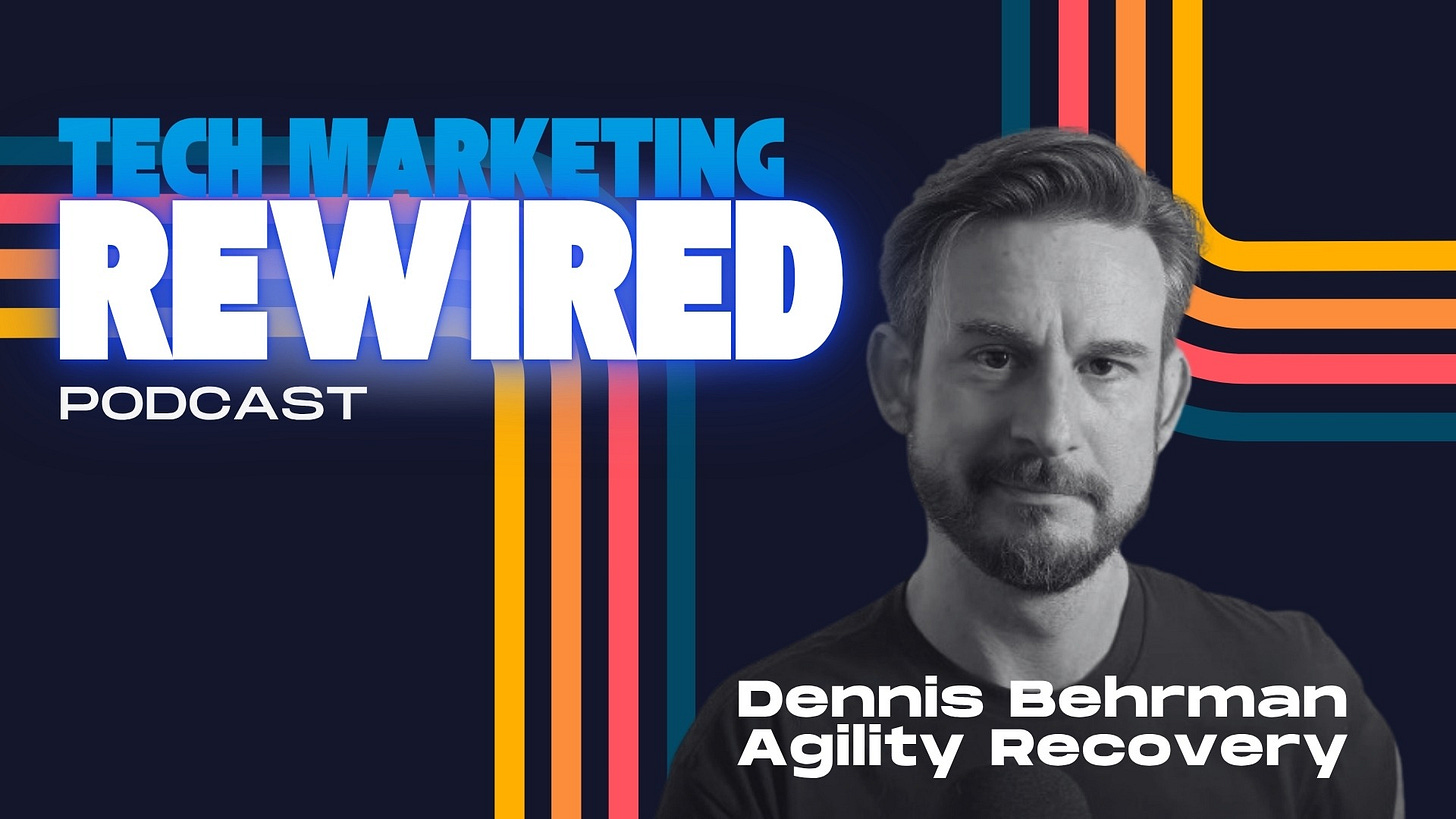Marketing Measurement Is Broken—But Simpler Might Be Smarter
What I learned from my conversation with Dennis Behrman, CMO of Agility Recovery.
I sat down with Dennis Behrman, CMO at Agility Recovery, for an episode that got right at of one of the most uncomfortable truths in B2B marketing: we don’t really know what’s working.
Dennis has held marketing leadership roles across public, private, and private equity-backed companies, and he’s spent years in the trenches of attribution modeling, marketing analytics, and defending budgets with data. His conclusion? Most of it’s noise.
We covered a lot—from last-touch sanity to privacy-friendly analytics to agentic AI for lead generation. Here’s what I walked away with.
Attribution Is Mostly a Story We Tell Ourselves
Attribution sounds scientific. But the reality is more like a boardroom debate.
“We had all this data… and we still had to sit around and ask: where did this deal come from?”
Dennis pointed out the contradiction in modern attribution: we build complex models, run multi-touch tracking, and still end up relying on human interpretation. It’s not that data doesn’t matter, but the clarity we think we’re getting often isn’t real clarity at all.
My Take:
I get it. I’ve sat in those same rooms. What Dennis reminded me is that attribution isn’t an answer, it’s an argument. And if we treat it like gospel, we miss the bigger picture: performance data is only as useful as our ability to understand what really moved the needle. This is something Omar Akhtar touched on in one of my last episodes of TMW.
Most of the Data Is Just Noise
You can track everything, but that doesn’t mean it’s helpful.
“Only about 10% is signal. The rest is noise. And we don’t have a good way to filter it.”
When Dennis looked through hundreds of MQLs during a QBR, he ignored the attribution models and just looked at the last activity before conversion. That one thing, the final touch, is usually the clearest, most consistent indicator of what actually worked.
My Take:
We’ve been taught to worship the full journey. But Dennis makes a case for focusing on the moment that matters most: the trigger that turned interest into action. It’s not the whole story, but it’s often the only part that’s reliably measurable.
You Don’t Always Need a Big Brand to Win
In niche markets with urgent problems, clarity and utility beat awareness and flair.
“I’ve always sought out opportunities where you didn’t need a brand to be successful.”
Dennis works in disaster recovery, a space where trust and speed matter more than brand recognition. For his audience, a clear value prop delivered at the right time often outperforms broad brand campaigns.
My Take:
Brand matters, but context matters more. In some categories, brand is a force multiplier. In others, it’s a nice-to-have. The trick is knowing where you are and not over-engineering a brand play when a straight offer will do.
GA and Cookie Banners Might Be Hurting More Than Helping
Dennis is stripping back his martech stack and questioning whether Google Analytics even belongs on the site.
“Nobody likes cookie banners. Not the users. Not the marketers. Probably not even Google.”
If your business doesn’t operate in Europe, he argues, you may not need the GDPR disclaimers at all. By switching to privacy-minded analytics that don’t require cookies, you can remove friction and simplify your tech.
My Take:
This was a wake-up call. We often assume tools like GA and Tag Manager are table stakes. But if they create friction, data debt, and legal headaches—especially for low-volume, high-value B2B sites, maybe it’s time to rethink what’s “standard.”
GPT Agents Are the New Intent Data
Dennis is using AI agents to find prospects before they start searching—by scanning the real world for relevant events.
“One GPT finds the event. One identifies businesses affected. One writes the perfect pitch.”
He’s automating lead gen with agentic AI: stacking GPTs that scrape weather data, map risk zones, and connect the dots to likely prospects, then generate a tailored message based on that scenario. It’s contextual, real-time, and miles ahead of traditional outbound.
My Take:
This is the future. While most of us are still debating subject lines and list pulls, Dennis is building a signal engine that doesn’t wait for form fills. It’s intent before intent, and it’s how marketing will work in 2 years (or less).
The Role of the Marketer Is Mutating
Marketers aren’t disappearing. But the job description is changing fast.
“We’re becoming operators. Tool selection is the skill that matters now.”
Dennis believes that with AI and automation accelerating, the value marketers bring won’t be ideas or copy. It’ll be choosing and orchestrating the right tools to turn inputs into outcomes.
My Take:
We need to stop hiring “campaign builders” and start hiring system thinkers. The marketer of the future will still tell stories, but they’ll also write prompts, test automations, and think like product people. That shift has already started.
If you're leading marketing at a tech brand and wrestling with attribution, AI, or how to do more with less, Dennis’s perspective is one you need to hear.
Contact Dennis on LinkedIn.
Learn more about Agility Recovery at agilityrecovery.com.
🎧 Listen to the full episode:
Spotify | Apple Podcasts | YouTube
And if you want help cutting through the noise and building a smarter, simpler, more automated marketing system—let’s talk. That’s what we do at Mighty & True.
— Kevin



